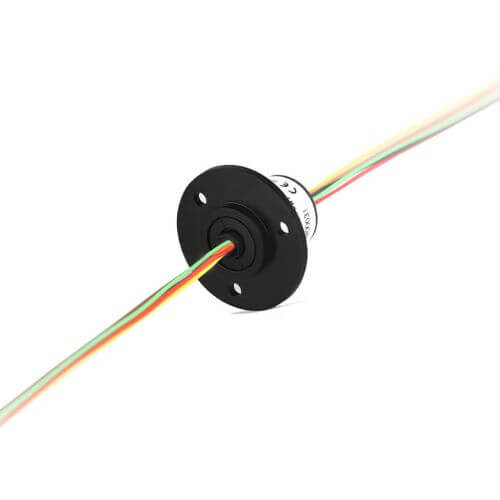As we delve into the fascinating world of electromechanical systems, one component stands out for its integral role in enabling essential transformations – the slip ring. A slip ring, also known as a rotary electrical joint, electrical collector, or swivel, is a high-precision and sophisticated device. It plays a crucial role in various sectors, from telecommunications to radar systems, wind turbines, military applications, and even heavy industrial machinery.
Designed to ensure electrical continuity between a stationary and a rotating body, a slip ring seamlessly transmits power, data, or signals while the system is in motion. This eliminates the trouble of entangled wires that limit the rotation of moving parts in the system.
At the heart of this compelling device is the slip ring body, a component that predominantly influences the operation of the slip ring system. The body houses the essential elements that facilitate the transmission process, such as the conductive rings and brushes, connected to the stationary and rotating parts of the system. Overall, the slip ring body is an ingenious solution that embodies a simple concept repurposed for a diverse array of complex, high-stakes applications.
In this article, we unravel the vital piece of the slip ring puzzle – the slip ring body, delving deeper into its functions, types, design, challenges, and market trends while addressing user concerns. Ultimately, our objective is to provide a comprehensive and insightful exploration of the slip ring body, promoting a better understanding of its undeniable importance in the slip ring system.
Understanding Slip Ring Body Function
To fully appreciate the significance of the slip ring body in the context of electromechanical systems, it is crucial to dissect its functioning and how it aids these systems’ operations. The slip ring body takes center stage in enabling the smooth operation of various devices and machinery by overcoming the hurdles of electrical connectivity during motion.
Function in the Slip Ring System
Within a slip ring system, the slip ring body acts as the central hub that houses critical components, such as conductive rings and brushes. The conductive rings are attached to the rotating body, while the brushes maintain contact with these rings as they rotate. The stationary part of the system connects to these brushes, ensuring an uninterrupted electrical flow between the stationary and rotating components.
The slip ring body facilitates a continuous transmission of power, signals, or data. Its design maintains a steady, low-resistance electrical contact, effectively avoiding interruptions, system failures, and wear issues commonly observed when wires are twisted or tangled during the rotation of interconnected components.
Aiding in Electromechanical Operations
Employed in an extensive array of industries and applications, the slip ring body drastically enhances the scope and efficiency of electromechanical operations. From allowing radar antennae to rotate without hindrance while transmitting signals, to empowering industrial machinery like cranes and wind turbines, the slip ring body simplifies complex operational obstacles.
The presence of a well-designed slip ring body within these systems significantly reduces electrical noise and interference, which could otherwise compromise the quality and performance of the transmitted signals. In addition, the slip ring body allows for better thermal management, preventing potential damage from heat generated during continuous operation.
Transmitting Electrical Power and Signals
The slip ring body’s primary purpose is to facilitate the reliable and efficient transmission of electrical power and signals from one part of the system to another. It caters to both analog and digital signals, as well as power lines carrying electrical energy necessary to operate various components within the system.
By enabling smooth and unhindered transmission, the slip ring body ensures the seamless operation of crucial systems across diverse sectors, like aerospace, maritime, medicine, and communication. Its unwavering responsiveness and consistency have contributed to the development of new, innovative solutions and increased reliance on electromechanical systems.
In summary, the slip ring body, as a critical component within the slip ring system, guarantees the smooth and effective functioning of electromechanical operations. It not only ensures a continuous transmission of electrical power and signals but also enhances the performance, reliability, and longevity of countless systems worldwide.
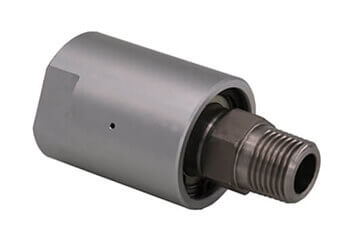
Types of Slip Ring Bodies
Slip ring bodies come in different types to cater to the requirements of diverse applications. Matching a specific type of slip ring body to the correct application scenario plays a significant role in ensuring system performance, durability, and lifespan. Here, we explore the different types of slip ring bodies, their features, and how to choose the appropriate one based on specific applications.
Description of Different Types of Slip Ring Bodies
Capsule Slip Ring Bodies: These are typically small, compact, and cost-effective, designed for light to moderate load applications. Enclosed in a small housing, the capsule slip ring body is perfect for applications with space limitations.
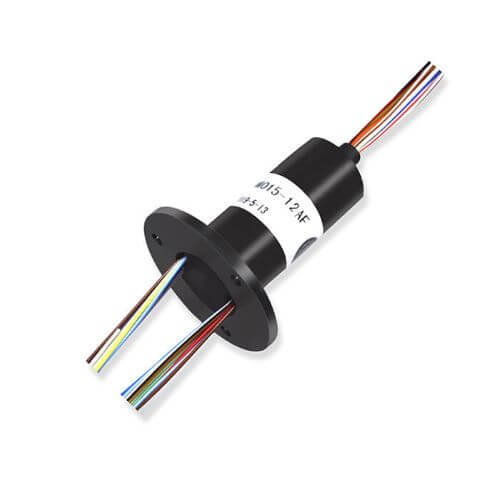
Through-hole or Hollow Shaft Slip Ring Bodies: These slip rings come with a central hole, also known as a bore, that allows for integration with other components like wires or shafts to pass through. They are suitable for applications that require simultaneous rotation and passage of fluid or gas.
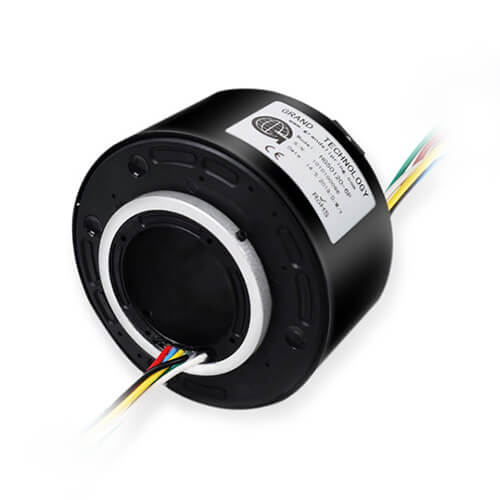
Pancake Slip Ring Bodies: These are circular slip rings that feature a flat, disc-like shape. They are ideal for horizontal installation where height or axial length is a limitation but which have ample radial space.

Mercury-Wetted Slip Ring Bodies: These types contain mercury for their functioning, which provides low electrical noise. However, due to mercury’s hazardous nature, they are generally less preferred.
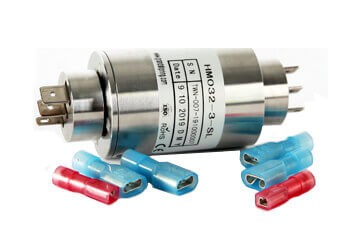
Features, Advantages, and Disadvantages
Capsule Slip Ring Bodies
- Feature: Compact and lightweight
- Advantages: Economical, ideal for light load applications, and simple integration
- Disadvantages: Limited number of circuits and lower current capacity
Through-hole Slip Ring Bodies
- Feature: Central hole for integrated systems
- Advantages: Customizable size, compatible with data and signal transmission, and fluid-compatible
- Disadvantages: Larger and heavier, more expensive
Pancake Slip Ring Bodies
- Feature: Flat, disc-like shape
- Advantages: Ideal for confined spaces in height
- Disadvantages: Potential for more electrical noise, higher crosstalk
Mercury-Wetted Slip Ring Bodies
- Feature: Use of mercury for functioning
- Advantages: Low electrical noise, long lifespan
- Disadvantages: Health hazards, environmental restrictions, not suitable for mobile applications
Choosing the Appropriate Type Depending on the Application
The selection of the correct slip ring body fundamentally depends on the specific requirements of the application. Considerations include load capacity, data transmission needs, available space, necessary lifespan, environmental conditions, safety standards, and budget.
For example, capsule slip ring bodies might be more suitable for small-scale electronic devices due to their compact size. In contrast, industrial machinery or wind turbines might require through-hole slip ring bodies for their large-scale operations that involve the simultaneous passage of fluids or gases.
Understanding these different types and their suitable applications can ensure optimal performance, enhance life expectancy, and reduce potential system failures. Choosing the right slip ring body helps in delivering the desired operational efficiency, thereby maximizing the effectiveness of electromechanical systems.
Construction and Design of Slip Ring Bodies
The construction and design of a slip ring body largely dictate its performance, durability, and suitability for different applications. The choice of materials and the design considerations based on specific requirements are essential factors to examine when creating an efficient and long-lasting slip ring body.
Overview of Materials Used in Construction and Design
The key materials used for the construction and design of slip ring bodies include various metals, each offering its unique properties and benefits. The following are the most common choices:
- Copper: Copper is widely used in slip ring bodies due to its excellent electrical conductivity and thermal management properties. It is a durable and corrosion-resistant material, ensuring good performance and longevity.
- Gold: Gold excels in low contact resistance and exceptional signal transmission properties. Its excellent natural lubricity and resistance to corrosion make it a preferred choice for high-frequency signal transmission applications.
- Silver: Silver offers high conductivity and is highly durable, making it ideal for high-power applications. It is also resistant to wear and tarnishing, making it a suitable option for long-lasting, high-performance slip ring bodies.
- Aluminum: Aluminum is lightweight and offers good conductivity. The slip ring bodies made from aluminum have good wear resistance, making them suitable for specific applications and industries.
- Graphite: Graphite is often used for brushes, as it exhibits excellent self-lubricating properties and low friction coefficients. It further reduces wear and tear on the contact surfaces.
How Materials Affect Performance and Durability
Each material used in the construction and design of a slip ring body lends its distinct set of properties to the overall performance and durability of the device. For instance, copper ensures excellent conductivity and thermal management, while gold provides superior signal transmission and low contact resistance. Silver, on the other hand, plays a crucial role in enhancing durability and resisting wear.
By selecting the right material for a specific slip ring body and its application, it is possible to optimize the device’s performance and extend its useful life. The use of corrosion-resistant materials, for example, can drastically reduce the risk of system failures and degradation, particularly for slip rings deployed in harsh or moist environments.
Design Considerations for a Slip Ring Body
When designing slip ring bodies, factors such as space constraints, integration parameters, and application requirements must be taken into account. Below are some common design considerations:
- Size Restrictions: In certain applications, space limitations can necessitate the use of smaller, specialized slip ring bodies like capsule or miniature slip ring bodies.
- Through-hole and Hollow Shaft: Through-hole or hollow shaft slip ring bodies are required when the design involves integrating with other components, such as a shaft or when a fluid or gas must pass through the system.
- Component Placement: The placement and arrangement of components within the slip ring body must be precisely designed to ensure optimal performance, minimize electrical noise and interference, and facilitate maintenance and replacement as needed.
- Operating Environment: Slip ring body designs must factor in environmental conditions like temperature, humidity, and exposure to chemicals or contaminants. This ensures that the device operates efficiently even in challenging or harsh environments.
In conclusion, it is essential to carefully consider the choice of materials and design elements when constructing a slip ring body. This is vital to achieving the desired performance, durability, and optimal functionality for electromechanical systems across various industries and applications.
Slip Ring Body: Common Challenges and Solutions
Despite their pivotal role in enabling uninterrupted electric continuity in rotating systems, slip ring bodies are not devoid of challenges. They can experience operational obstacles that can affect their efficiency and lifespan. However, by understanding these challenges and implementing suitable solutions, many of these issues can be effectively managed.
Overview of Common Challenges
- Wear and Tear: Slip ring bodies, particularly their brushes and contact surfaces, undergo wear and tear due to continuous operation and friction. This results in poor contact, reduced signal quality, and eventual system failure if not addressed promptly.
- Corrosion: Exposed to harsh environments, the materials in a slip ring body can corrode over time, affecting their performance and lifespan.
- Electrical Noise: Given its role as a conduit for signal and power transmission, a slip ring body can generate electrical noise, which can interfere with signal quality and system operation.
- Thermal Management: The constant electrical contact and transmission can generate heat, which if not adequately managed, can lead to component damage or system failure over time.
Suggested Solutions and Preventive Measures
Addressing these common challenges often involves implementing corrective measures and undertaking regular maintenance. This requires good design practices, as well as the use of suitable materials and construction techniques. Here are some solutions:
- Regular Maintenance: Frequent cleaning, inspection, and periodic replacement of worn-out parts can limit wear and tear and extend the slip ring body’s lifespan.
- Use of Corrosion-Resistant Materials: Employing corrosion-resistant materials such as gold or treated copper can help counteract the effects of a harsh environment. An additional protective casing or sealant can also be used for better protection.
- Noise Reduction Features: Employing noise reduction design elements and materials such as weaved shields and low-resistance conductors can help minimize electrical noise.
- Effective Heat Dissipation Design: Slip ring bodies should feature sufficient heat dissipation mechanisms, such as the use of materials with excellent thermal conductivity like copper, to avoid overheating and subsequent damage.
In conclusion, through periodic maintenance, thoughtful material selection, and effective design strategies, the common challenges associated with slip ring bodies can be mitigated considerably. Therefore, ensuring their optimal performance and enhancing the efficiency and longevity of the various systems they support.
Slip Ring Body: Market Trends and Innovations
Slip ring bodies have witnessed substantial technological advancements and market evolution over time, strongly influenced by emerging engineering trends and industry demands. These advancements are not only enhancing the performance and efficiency of slip ring bodies but also driving innovative design modifications.
Key Market Trends and Technological Advancements
- Miniaturization: The trend towards smaller, more compact electronic devices is leading to the development of miniaturized slip ring bodies that can cater to constrained space requirements without compromising performance.
- Nanotechnology: The integration of nanotechnology into slip ring bodies is another significant improvement, enabling enhanced electrical conductivity, wear resistance, and heat dissipation.
- Wireless Technology: With the advent of wireless technology, traditional brushes and contact surfaces are gradually being replaced by wireless slip rings, greatly minimizing wear and related maintenance.
- Customization: Tailor-made slip ring bodies for specific applications like wind turbines, medical equipment, or military devices are increasingly being catered to by various manufacturers, leading to an increased demand in the customized slip ring market.
Innovations Influencing Slip Ring Body Designs
These advancements and market trends significantly impact the design and construction aspects of slip ring bodies:
- Miniaturization: This leads to the design of compact or micro slip ring bodies that are efficient, durable, and perfectly suit the dimensions of small equipment or devices.
- Nanotechnology: Slip ring bodies enhanced with nanomaterials offer excellent conductivity and improved heat dissipation features, making the device more efficient.
- Wireless Technology: The design of wireless slip rings eliminates the need for physical contact between brushes and rotating parts, presenting a maintenance-friendly yet efficient design.
- Customization: Custom-made designs cater to applications with specific requirements like special environmental conditions, unique dimensional requirements, or specific power and data transmission needs.
In summary, continuous market trends and technological advancements in slip ring technology are driving innovations that positively impact the performance, durability, and versatility of slip ring bodies. Staying tuned to these trends and incorporating them into product designs helps manufacturers deliver high-performing, technologically advanced slip ring bodies that meet evolving industry needs and expectations.
Slip Ring Body: User Concerns
Users operating systems with slip ring bodies often have concerns related to these components’ lifespan, maintenance, and costs. By understanding these issues and providing insightful solutions, it becomes possible to ensure efficient operation and extend the longevity of slip ring bodies.
Addressing User Concerns
- Lifespan Concerns: The operational life of a slip ring body primarily depends on its design, the materials used, its application, and its maintenance. In general, well-designed and properly maintained slip rings should have a long operational life.
- Maintenance Concerns: Routine maintenance, including regular cleaning and inspection, is vital to ensure the slip ring body’s optimal performance. The frequency of maintenance can be influenced by the operating environment, materials used, and load characteristics.
- Cost Concerns: While superior materials and design elements can elevate the initial costs, they can lower the long-term costs by reducing maintenance needs and extending the product’s lifespan. Hence, it’s a balance between initial investment and long-term gains.
Tips for Efficient Operation and Longevity of a Slip Ring Body
- Periodic Maintenance: Users should incorporate regular cleaning, inspection, and timely replacements of worn-out parts, such as brushes, into their maintenance routine. This can mitigate various operational issues and extend the slip ring body’s lifespan.
- Proper Storage: When not in use, slip ring bodies should be stored in a cool, dry place away from dust and corrosives to prevent premature wear and decay.
- Correct Use: Slip ring bodies should be operated within their specified power and rotational speed ratings to avoid overheating and undue wear and tear.
- Preferring Quality: Opting for high-quality slip ring bodies made from durable, conductive materials, even at a slightly higher cost, is beneficial in the long run due to the higher performance and longer lifespan.
In conclusion, understanding common user concerns and providing suitable upkeep tips can help enhance the lifespan and efficiency of slip ring bodies. While quality materials and thoughtful design can indeed increase the initial cost, the long-term benefits in terms of reduced maintenance and extended operational life tend to outweigh these costs over time.
Slip Ring Body: Case Study
To further understand the impact of slip ring bodies in real-world applications, let’s look at a case study from the wind energy industry, which has effectively harnessed the benefits of slip ring technology and seen substantial improvements.
Case Study: Wind Energy Industry
The wind energy sector has increased its reliance on slip ring technology in recent years. One such example is a leading wind turbine manufacturer, which experienced issues with the energy transmission system in its wind turbines.
Previously, wind turbines experienced interrupted power transmissions due to wear and tear of traditional contact-based systems in their rotating parts. Frustrated with the frequent maintenance needs and downtimes, the manufacturer decided to make a change.
They decided to implement Slip Ring Bodies with advanced contact technology, eased maintenance, a reduced contact pressure system, and high-quality conductive materials. These slip ring bodies were specially designed and engineered to meet the unique requirements of a wind turbine environment—high altitude, varying weather conditions, and the need for reliable energy transmission.

Benefits and Improvements Since Implementation
The difference in operation was significant. After the implementation:
- Reduced Maintenance: The new slip rings required less maintenance, resulting in less system downtime and increased turbine uptime—crucial for continuous energy production.
- Improved Durability: The use of durable conductive materials and optimized design ensured a longer lifespan of the slip ring bodies in comparison to the old system.
- Enhanced Efficiency: The custom slip ring bodies significantly improved the efficiency of the power transmission, implementing a high-speed data transmission for monitoring and control.
- Cost Savings: Despite the initial investment for the high-quality slip ring bodies, the manufacturer saw considerable cost savings due to reduced maintenance and enhanced lifespan.
In conclusion, the case study demonstrates how the right implementation of advanced slip ring bodies can bring about significant benefits—enhanced operational efficiency, increased durability, cost savings, and reduced maintenance. This showcases the potentially transformative effect of slip ring bodies on businesses or industries.
Conclusion
The importance of the slip ring body in the overall operation of the slip ring system cannot be overstated. Staying informed about industry advancements and adopting suitable measures will help users maximize the benefits of this versatile and essential technology.
See What We Can Do

